Contents

The orchid attracts many flower growers with its beauty. However, this plant is very demanding to care for. If you do not follow certain rules, then the orchid may die without pleasing its owner with beautiful flowers. Therefore, it is so important to choose the optimal soil for the plant, provide it with sufficient moisture and observe the irrigation regime.
Orchid adaptation to apartment conditions
Any move is stressful for the plant. In order for it to endure it with minimal losses, it is necessary from the first days of the appearance of a new “tenant” in the apartment to follow the rules for caring for him.
How long does the quarantine last?
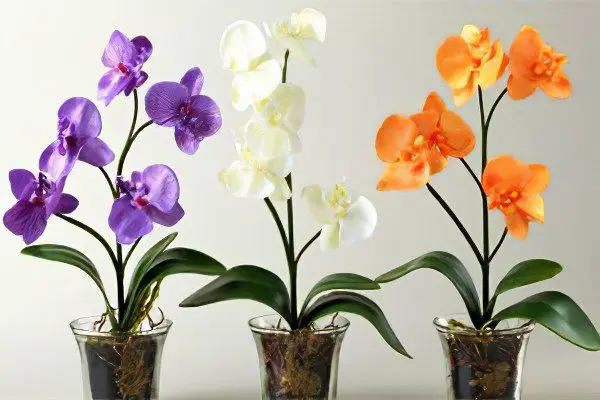
Immediately after the move, it is necessary to provide the plant with a 14-day quarantine. The orchid should be placed separately from other flowers. A bedside table is quite suitable for this purpose, provided that there is no place for a flower on the windowsill. In addition, a plant that has been in the store for a long time does not need direct sunlight. The orchid should be given rest.
It is not necessary to apply any fertilizers in the first two weeks after the move. It is necessary that the flower independently adapt to the conditions surrounding it.
It is also worth abandoning watering, but at the same time you need to carefully monitor the condition of the leaves and stem of the plant. This will allow timely identification of possible pests and stop their reproduction.
After 2 weeks, you can put the orchid on the windowsill, but you need to do this gradually, at first only in the morning and evening hours, so that it gets used to the sun. From the same time, you can start watering the flower.
Briefly about transplanting orchids
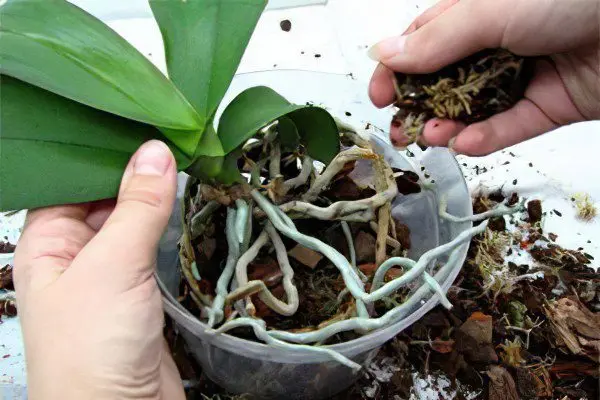
As a rule, a transplant will not be required for a purchased orchid for two years. However, if Sphagnum moss was used as soil for the plant in the store, then the flower should be transplanted as soon as possible.
Once the plant has been introduced into the new soil, there is no need to fertilize it. It is enough just to keep it in a dry state, and it will get used to the new conditions on its own. If there are no insects and spots on the orchid, then you do not need to treat the plant with any preparations. Excess chemicals can harm even an absolutely healthy flower.
As practice shows, a plant that has just been bought and transplanted does not need anything other than complete rest. You shouldn’t even water it. Thus, it activates its own forces as much as possible and adapts to new conditions.
Reproduction of orchids
Breeding orchids is not difficult, but certain rules must be followed. Reproduction of a flower is possible in several ways.
Reproduction of orchids by stem offspring
Stem offspring or “babies” of an orchid are small new plants. Such shoots are formed in those flowers that have an increased level of nitrogen. If such lateral processes appeared on the orchid, then you should start spraying it more often and wait until the shoots take root. When this happens, you can separate the stem from the main flower, after which it must be treated with powdered charcoal and planted in a separate pot.
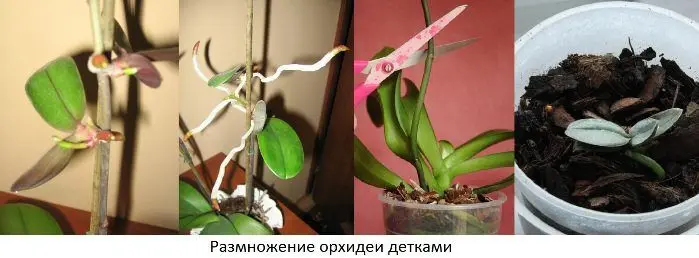
Propagation of orchids by layering
Layers are present in those orchids that grow horizontally (sympodial plants). They often appear in those flowers whose shoots have an elongated or thickened cylinder shape.
In order for the layering to awaken, it will be necessary to form a small greenhouse over that part of the flower where the buds formed. You can use a plastic cup for this. To increase the humidity, you need to spray the moss in the greenhouse, as well as the shoot itself.
After about a month of being in warmth and moisture, the buds will awaken and new plants will appear from them, having their own leaves and roots. It remains only to carefully separate them from the main trunk, process and transplant into a separate pot. To strengthen young shoots, they can be kept in a greenhouse for some time.

Vegetative breeding method
With the help of vegetations, any species and varieties of plants can reproduce. To do this, you need to divide the root of the orchid into several parts. It is important that at least 2 pseudobulbs remain on each part. The rhizome of a young plant should not be divided, it should be mature and strong.
The flower will need to be carefully removed from the pot, shake off the earth from the roots and cut the root into several parts. For this, it is convenient to use garden shears. Slices need to be treated with charcoal and planted each part of the plant in different pots. New orchids need to be watered and sprayed. When new leaves or shoots appear, spraying and intensive watering can be stopped, as these formations indicate that the plant has taken root.

How to care for an orchid in the flowering phase and after it?
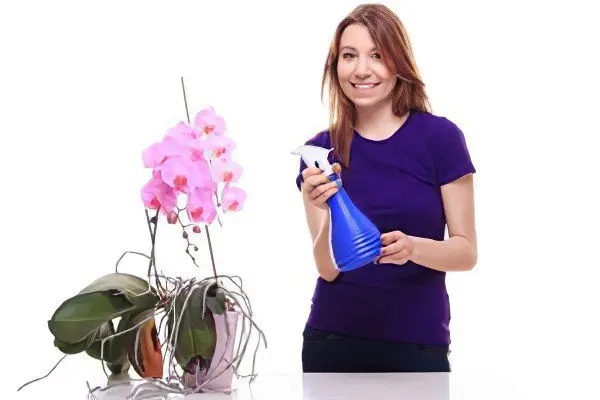
If the plant has formed flowers, then the following care recommendations must be observed:
It is necessary to water the orchid intensively. The best way to do this is with a shower. The water must be warm. The optimum temperature is 35°C. It is important that water does not remain at the point of growth of the orchid, as this threatens the death of the plant.
The temperature at night should not be too low. It should be increased by 5 ° C from the recommended one.
It is forbidden to transplant the plant during the flowering period.
In the flowering phase, you can make top dressing, but you should follow the measure.
Do not often rearrange the orchid from one place to another, this will increase the flowering period.
Orchid care during dormancy
After the flower has become dry and blackened, it is necessary to cut it off. The incision must be made at the very base. Feeding during the dormant period should be abandoned, or reduced to a minimum. In winter, the orchid is watered once a month, but the plant can be sprayed more often.
If the orchid does not bloom at the right time, then this indicates that it needs to be transplanted. You can try moving the pot to another place – this should help. It is also necessary to transfer a flower in the case when its leaves wrinkle and turn yellow, and the peduncle does not appear.
Proper care of such a fastidious plant as an orchid will allow it to achieve regular and long flowering.
What to do if the orchid does not bloom?
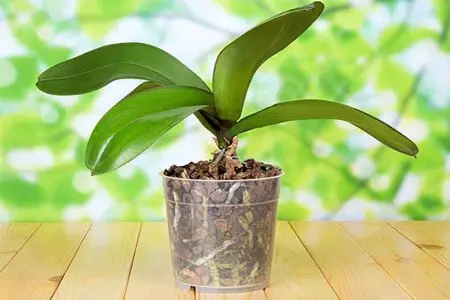
Even the most thorough care is not a guarantee that the plant will give color. In order for it to form buds, you need to find out and eliminate the reasons for their absence.
Reasons. Most often, the orchid does not bloom due to excessive care. Such conditions are not typical for the natural habitat of the plant, so it grows leaves, but does not give buds.
Other interfering factors:
Abundant watering.
Nutrient deficiency.
Rotting or damage to the root system.
Too small pot.
Stress due to change of environment.
Tobacco smoke.
Finding a plant in a draft.
Constant movement of the pot from place to place.
Young plants do not bloom. Buds appear only on specimens older than 1,5 years, while they must have at least 5 leaves.
What to do if it does not bloom? The orchid should be in such conditions that the temperature difference between day and night is 4-6 degrees. If the root system has grown strongly, a new pot is needed. When transplanting, all damaged roots are removed.
Useful tips:
Stop watering for 2 weeks. Before this, the plant is abundantly moistened for 3 days.
Add succinic acid or Epin. Feed the plant for a week every day 3 times.
Saturate with moisture from the outside. To do this, the pot is brought into a steamed shower and left for 15-20 minutes.
Stop using nitrogen fertilizersor reduce their introduction.
The likelihood of flowers appearing on an orchid increases when the following conditions are met:
The plant receives light for at least 16 hours a day.
The air is humid all the time.
The orchid is not threatened by parasites and diseases.
Regular care and creating conditions close to those in which the orchid exists in its natural environment will help it adapt and produce abundant color.









